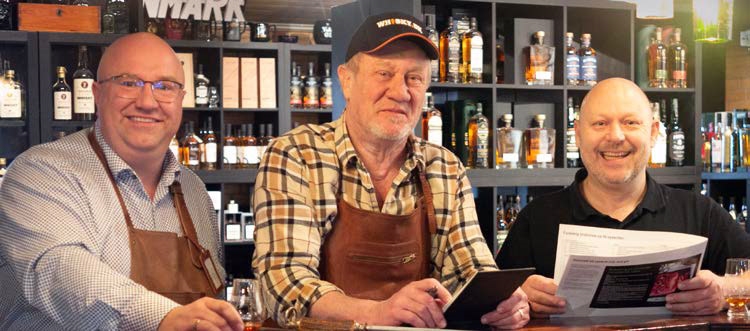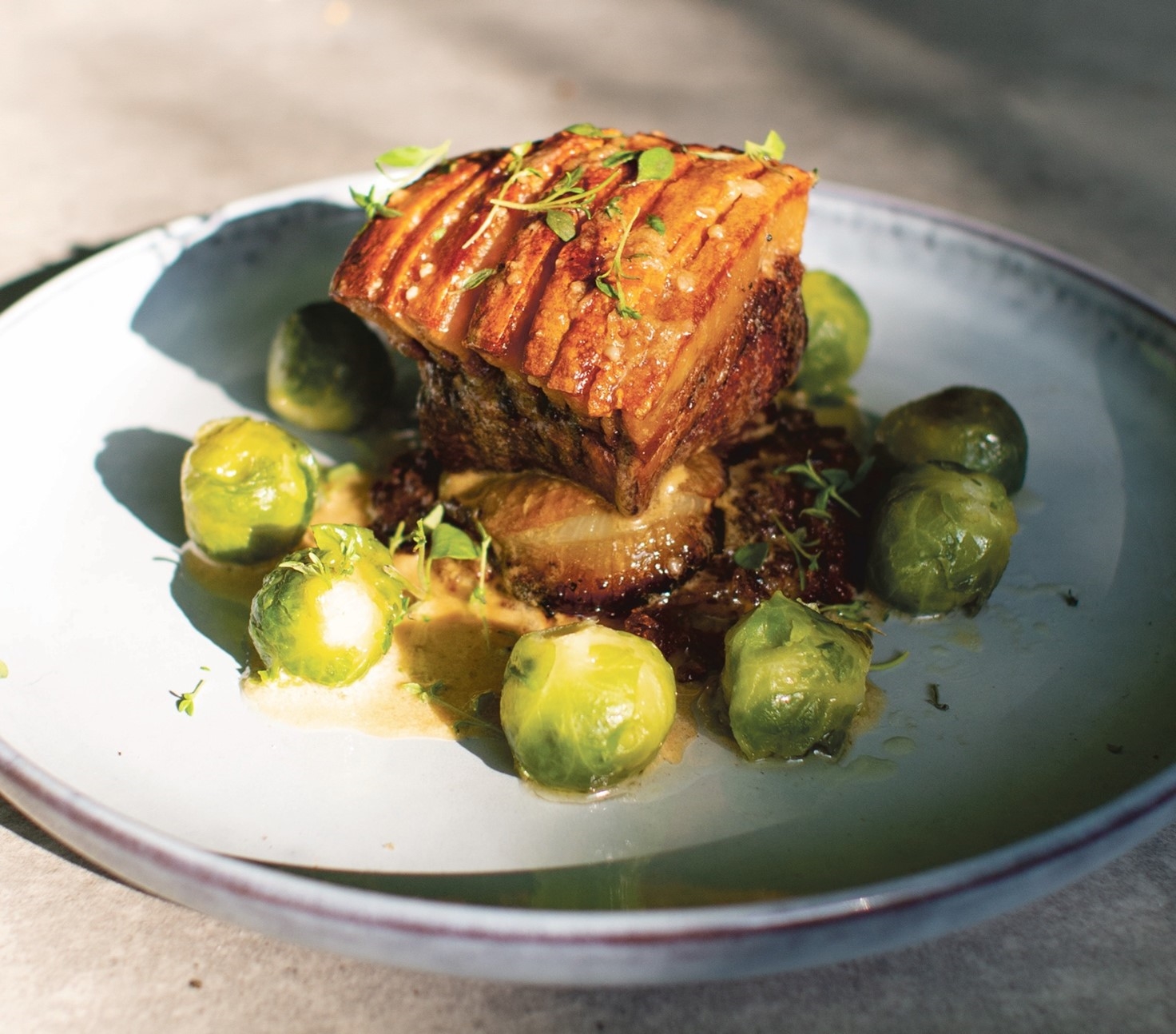And over the next few thousand years, it had spread to the entire planet, from Mesopotamia, to the rest of Asia, to Egypt, to Africa, ancient Rome, and all the way to South and Central America. Anything that was suitable for fermentation was experimented with, and the results were widely used in religious ceremonies, receptions, or for sheer enjoyment.
“Our African ape friend merely experienced the effect of the concept of fermentation.”
The Japanese fermented rice into sake, the Aztecs used agave for pulque, in South America, they fermented whatever grains they had and added various hallucinogens for effect, and even our own Vikings are believed to have brewed mead with honey, water, and yeast. And perhaps they also added some festive mushrooms to the drink to enhance the effect. In every corner of the world, regional variations of this intoxicating drink were experimented with, seeming to have come to stay.
All this was well and good, but no matter what they did, they could rarely achieve an effect above 14%, there had to be more to it than that. However, over time, they discovered alcohol's relatively low boiling point, and this knowledge gave birth to the distillation apparatus. By starting a controlled evaporation process and cooling it down at the right intervals, repeating this, and carefully collecting the results, they ended up with raw spirits of up to over 80%. This could then be stored and transported, to be subsequently diluted, infused with various botanical ingredients. And perhaps further stored in different types of containers, bottled, and enjoyed at just the right moment. Humanity had acquired a new toy, which would become a significant part of our existence. For better or for worse.
The discovery of distillation would prove to have a wide range of benefits. This pure alcohol could be used therapeutically and medicinally in many contexts, and quite quickly it became an important commodity because, unlike beer and wine, it is robust and long-lasting. When sailing the world's oceans for months on end as they did back then, spirits could prevent freshwater from spoiling, boost the crew's morale, and be a valuable commodity to have below deck, whether for bartering for anything from slaves, rubber, cotton, tea, and spices—everything that the growing global market demanded and that kept the world economy humming—back then.
Even well into the modern era, we continue to develop and refine the end product. Because the processes are so nuanced and complex in every facet of production, from fermentation, distillation, and storage to blending and the addition of ingredients, our quest for the ultimate dram will likely never cease. We have embraced alcohol as a beloved indulgence and use it every time something needs to be celebrated, when pain needs to be eased, or when we just need a break from our hectic daily lives. Fortunately, we have also learned to use it when cooking, which is less harmful to health because the alcohol is usually evaporated before the food hits the plate.
Cooking with spirits is both exciting and challenging, whether you're boiling, frying, braising, flambéing, or injecting. Over time, spirits have evolved with a plethora of characters, flavors, aromas, and thus gastronomic possibilities. We have long been putting mediocre whiskey in sauces, and we have found that vodka pairs excellently with tomato dishes. We also know that gin is great for rimming salmon, that tequila goes well with lime for raw fish marinades, and that grappa can easily elevate an Italian dessert to new heights. The possibilities are endless, and I hope this little book, which only scratches the surface of the palette, will provide inspiration for your journey. And perhaps also encourage you to bring a bottle or two into the kitchen.
In any case, we hope to inspire you to some festive and rewarding hours in the kitchen. Enjoy and bon appétit!
Ulrik Bertelsen, Jan Ohrt og Henrik Olsen

Food With Alcohol Cookbook by Jan Ohrt
ISBN: 35210040
57 pages
You can purchase the cookbook, but if you purchase one of the products below, it will be included in your purchase. (1 pc. pr. order):
Patridom Elixir de Ron
Tullamore D.E.W. Single Malt 18 år
Glenfiddich Our Original Twelve 12 år
Ragnarok Destilleret Økologisk Mjød
Little Isle Isle of Fionia
Hutchison's Ginger Wine
Benriach The Twelve 12 år
Distinctive Port Dalva
Boulard Calvados Pays d'Auge
Renegade New Age London Gin
The Whistler Irish Honey Whiskey Liquer
Pope Rum Co. The Original
Canaviais Cachca
Stoli Vodka The Original
Jack Daniels Tennessee Honey
Gunlöd Håndbrygget Økologisk Mjød
Mount Gay Black Barrel Est. 1703 Bardados Rum
Miles Rainwater Madeira Tinta Negra
Worthy Park Select Jamaica Rum
Bifrost Special Edition Økologisk Honningvin
Rammstein Stout Kraft Bier
Companero Ron Panama Extra Anejo
Xin Gub [Hsin Djin]
Bruichladdich The Classic Laddie
Glenglassaugh Sandend highland Single MaltQuinta Do Noval Black Reserve Port
Fary Lochan Sweet and Spicy Moscatel #01
Tanqueray London Dry Gin London Dry
Jack Daniel's Old no. 7 Tennessee Sour Mash Whiskey
Fary Lochan Gin Citrus
Highland Park 12 years old Viking Honour
Johnnie Walker Black Label 12 years old
Copenhagen Classic Gin
Talisker 10 years old Single Malt Scotch Whisky
Copenhagen Classic Vodka
The Singleton 12 years old Single Malt Scotch Whisky
Copenhagen Classic Single Malt Whisky
Wódka Vodka
Rum Nation Meticho Chocolate and Toffee
Boulder Spirits Straight Bourbon Whiskey
Ron Colón Salvadoreño Red Banana Oleo Rum
Ron Colón Rumzcal 33/66 Salvadoreño
Big Peat Whisky 12 years old
Søgaards London Dry Gin Organic
Windblown Whisky Søgaards Distillery Limited Edition Danish Whisky
Maclean's Nose Blended Scotch Whisky
Tequila San José Silver
Murray McDavid Single Malt Auchroisk Bourbon Finish
Mezclado, Dark C
Nordisk Brænderi Filippa Apple Brandy
Using spirits in your cooking is not a bad idea at all. No matter what food you prepare and which spirit you use, it will always enhance and add flavor. Everything from meat, fish, seafood, sauce, dessert, pickling, and glazing can benefit from a larger or smaller dram, and even a simple tart dough can be improved with a splash of good spirit.
This little cookbook you are holding in your hand is intended as a tribute to real food and good spirits. And by good spirits, we mean good spirits. Often, people think that when something doesn't taste quite right, you can just pour it into the food. Nothing could be further from the truth. When cooking with spirits, it's rarely for the sake of ethanol; most of it will evaporate anyway. What we're after are all the scents and flavors. So the first and most important rule is: Only use in your cooking what you enjoy drinking yourself!
Page 2: Maybe that's how it all began.
Page 4: Duck breast in port wine sauce.
Page 6: Hokkaido soup with whisky.
Page 8: Soy-baked salmon with gin.
Page 10: Grilled burger with whisky sauce.
Page 12: Gin & Tonic cheesecake.
Page 14: Salmon with mushrooms on whisky sauce.
Page 16: Whisky-infused veal tenderloin.
Page 18: Gin-marinated pork chop.
Page 20: Smoked cod with whisky.
Page 22: Is it okay to pour whisky into your food?
Page 24: Bloody Mary-infused oysters.
Page 26: Chocolate cake with berries and whisky.
Page 28: Crispy tuna with whisky dressing.
Page 30: Vodka penne.
Page 32: Rum balls with rum.
Page 34: Lobster with bourbon.
Page 36: Salvadoran party banana.
Page 38: Ceviche with giant shrimp.
Page 40: When rum was born.
Page 42: Grilled Côte du Boeuf.
Page 44: Gin-marinated chicken wings.
Page 46: Whisky-flambéed pork shank.
Page 48: Choripan with whisky chimichurri.
Page 50: Margarita sorbet.
Page 52: Roast pork with apple and onion.
Page 54: Chocolate fondant with rum.
Page 56: Eggs Benedict with apple brandy.
One of the dishes from 'Mad med Promiller #1' is this roast pork with apple, onion, and whisky sauce